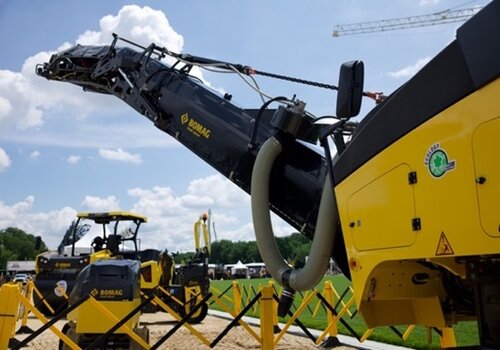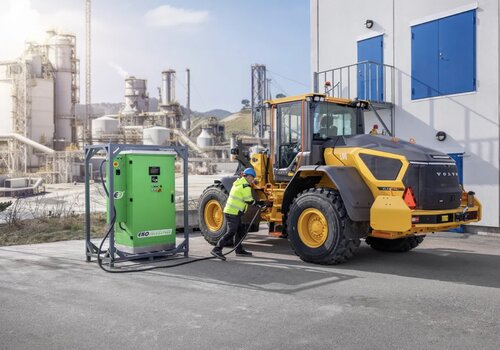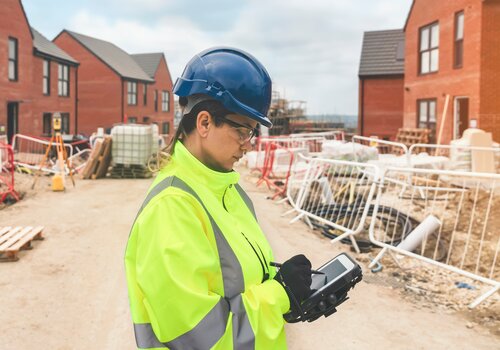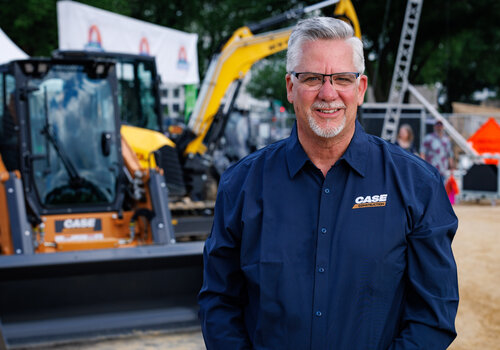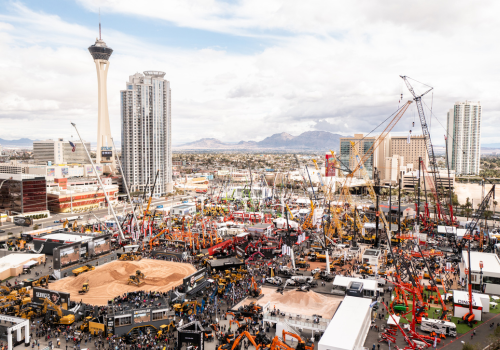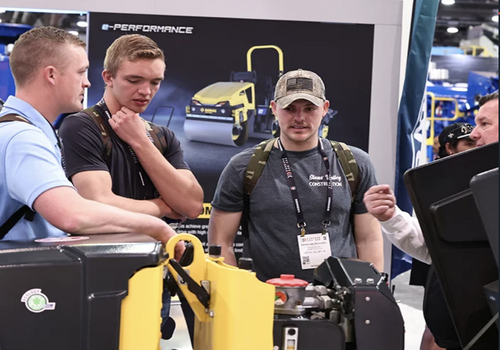The construction industry is increasingly adopting wearable technologies to enhance safety, efficiency and productivity on job sites. These innovations integrate advanced sensors and connectivity into standard safety gear, providing real-time data and alerts to both workers and supervisors. Below is an overview of some of the latest wearable technologies in construction, highlighting their benefits and real-world applications.
1. SMART HELMETS
The ubiquitous safety helmet has been a part of construction workers' lives for many decades, invented in 1919 and used in major construction projects of the 1930s like the Hoover Dam and the Golden Gate Bridge. Modern smart helmets are equipped with sensors that monitor vital signs, detect environmental hazards and provide real-time alerts to enhance worker safety. Features such as fatigue detection, microsleep prevention and proximity sensing are integrated to address common safety concerns on construction sites.
Example: The Guardio Armet Pro ‘smart’ helmet can detect falls and automatically call for help if needed. The helmet has a built-in sensor that measures the severity of a head impact to determine if help is needed. The helmet can also track a worker's location and send out an emergency alert if a worker doesn't return from a job site as expected.
2. EXOSKELETONS
Wearable exoskeletons assist workers in lifting heavy objects and reducing physical strain, thereby minimizing the risk of musculoskeletal injuries. These devices can be either passive, providing support through mechanical means, or active, using motors to augment the wearer’s strength. Once seen as a novelty, this technology is constantly evolving.
Example: The brand new IX BACK VOLTON by SuitX by Ottobock is the first “intelligent exoskeleton” that uses AI to support workers by sensing the user’s pattern of movement and automatically adjusting. With an 8-hour battery life, this lightweight exoskeleton can help reduce injuries from repetitive, heavy lifting.
3. SMART GLASSES
Smart glasses equipped with augmented reality (AR) and virtual reality (VR) capabilities enable workers to access project plans, receive real-time instructions and even capture photos or videos for documentation without using their hands. This technology enhances efficiency and ensures that workers have immediate access to necessary information.
Example: Vuzix M400™ smart glasses with augmented reality (AR) are being used by OSHA inspectors to communicate with off-site experts, document site conditions and receive immediate feedback, including Zoom calls.
4. SMART CLOTHING
Smart clothing in construction can monitor many factors, including location, movement and environmental conditions to help protect workers. From vests to boots, these devices can automatically alert supervisors, ensuring prompt response to potential incidents.
Example: Triax Technologies’ Spot-r system uses wearable sensors to detect slips, trips and falls, providing real-time data to supervisors. In addition to knowing where every worker is at any given time, the system also has an emergency warning with alarms to warn workers if a dangerous situation has occurred and an evacuation is needed.
5. HEAT STRESS MONITORING PATCH
Monitoring workers’ heat stress is a crucial part of worker safety. Wearable devices that measure sweat loss, skin temperature and movement can alert workers to rehydrate or rest, preventing heat-related illnesses.
Example: Chevron equipped its field workers with wearable hydration detection patch that measure sweat loss and skin temperature, providing personalized hydration recommendations and reducing the risk of heat stress.
LOOKING AHEAD
The integration of wearable technology in construction is revolutionizing job sites by improving efficiency, reducing costs and, most importantly, enhancing worker safety. As these technologies continue to evolve, their adoption is likely to become more widespread, leading to safer and more productive construction environments.
Photo credit: SEVENTYFOUR/BIGSTOCKPHOTO.COM


